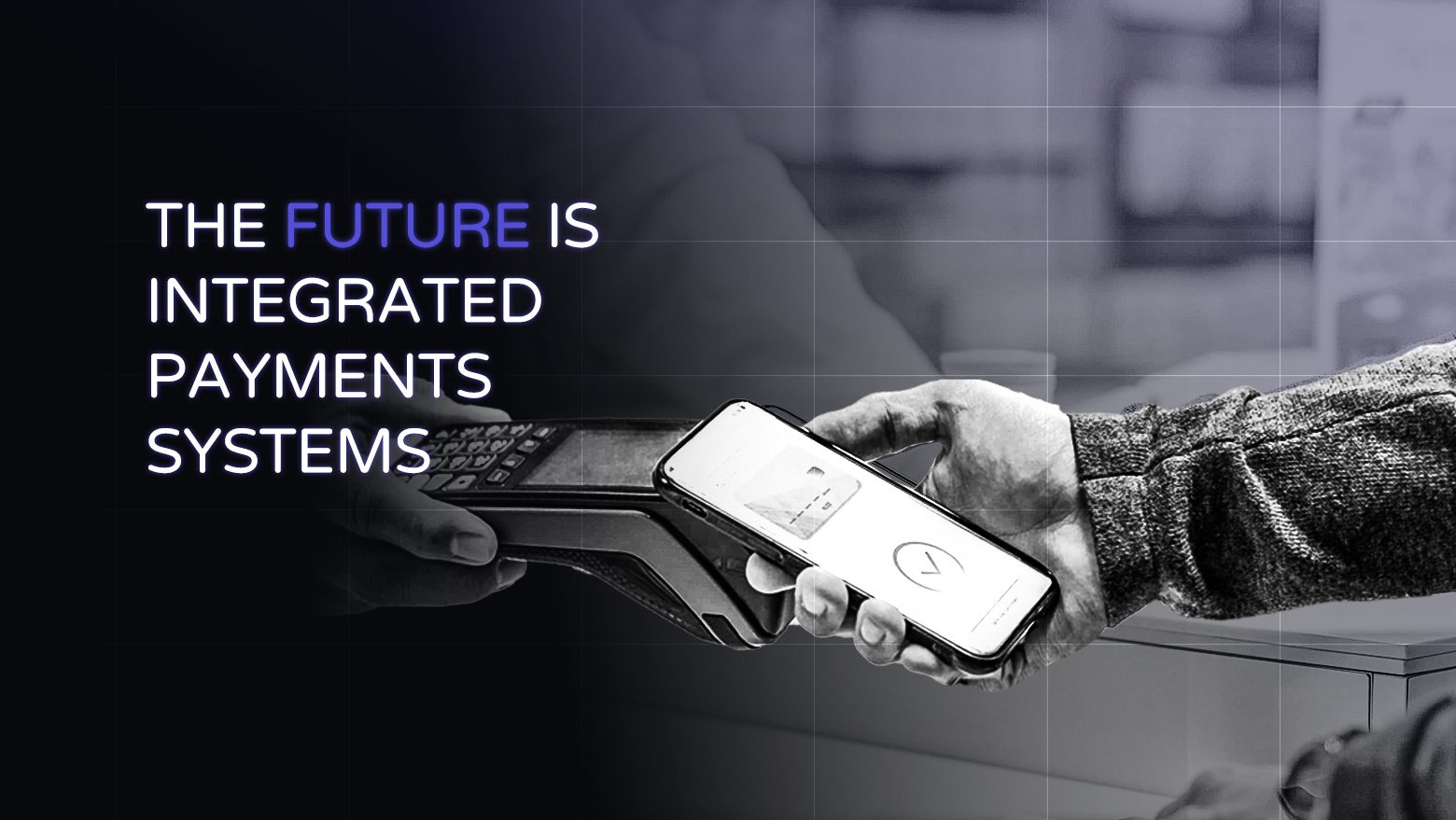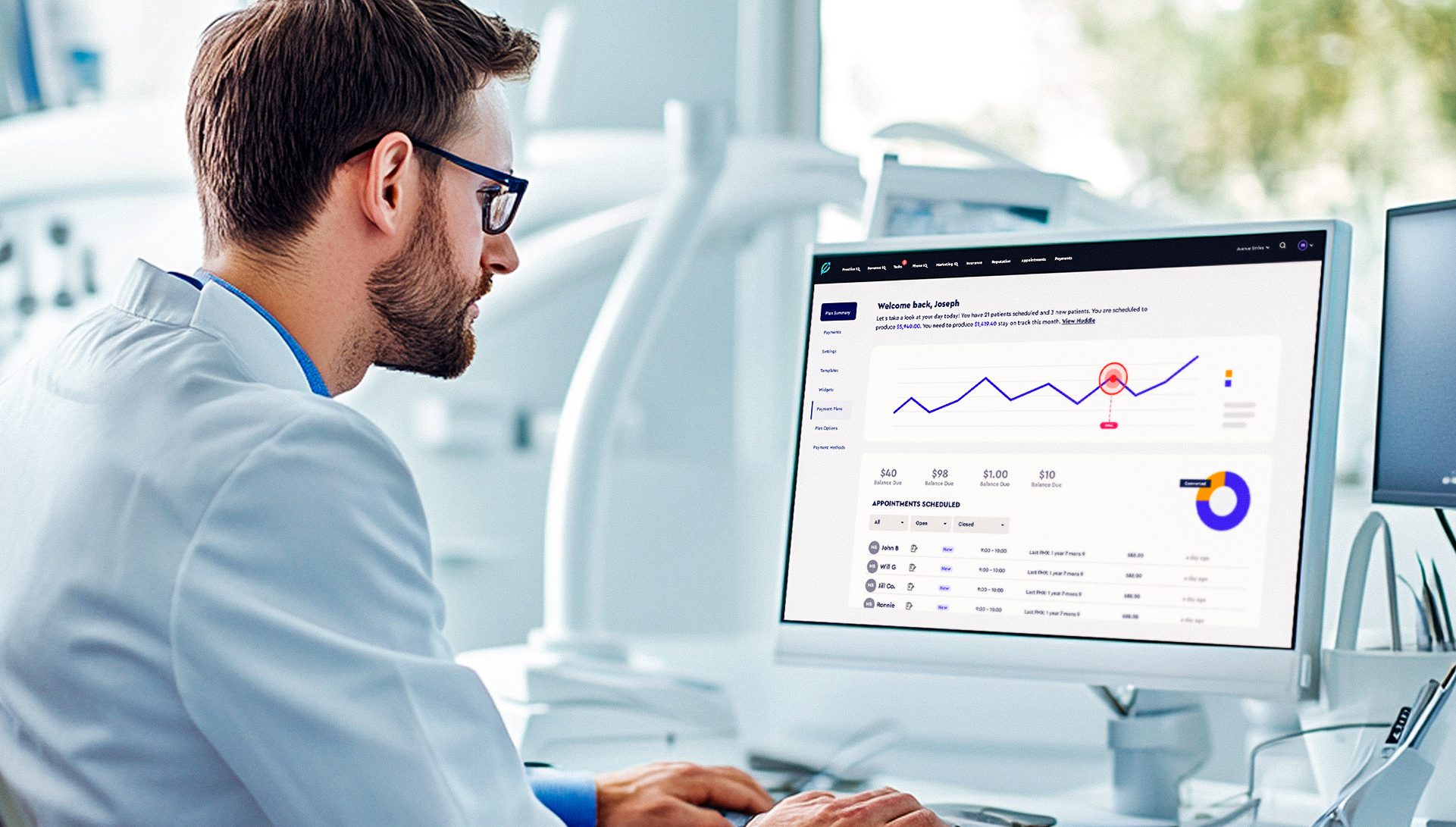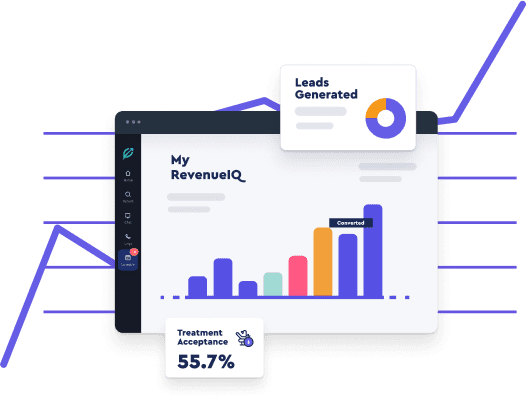Embracing Modern Solutions: Why Integrated Payment Systems Are the Future for Healthcare Practices

Key Highlights
- Integrated payment systems revolutionize business operations by offering seamless transactions and improved customer satisfaction.
- These systems combine software and hardware elements to streamline payment processing and enhance data security.
- Businesses benefit from cost savings and efficiency by adopting integrated payment solutions.
- Integrated payment systems provide valuable business insights through integrated data processing and analytics.
- Emerging technologies are shaping the future of payments, ushering in innovative solutions and greater convenience.
Introduction
In today’s fast-changing digital world, businesses want to improve their work and customer service. One key part of modern business that affects both is payment processing. An integrated payment system has become a game-changer. It changes how businesses handle transactions, deal with financial data, and connect with their customers.
Understanding Integrated Payment Systems
Gone are the days when you had to manage different terminals for each payment method. Now, an integrated payment system offers a single platform. This connects all your payment processing tasks with your existing accounting software.
With this system, transactions from different channels, like credit card payments online or debit card swipes in-store, are automatically recorded. This means you do not have to enter data manually. It reduces mistakes from handling many systems too.
This integrated approach also gives you a real-time view of your financial transactions. You can see your cash flow and overall performance in an accurate way.
Defining Integrated Payment Systems in the Modern Economy
An integrated payment system is a helpful integrated solution that combines payment processing and merchant services with other aspects of a business, such as accounting systems, CRM software, and payroll. In short, an integrated payment system reduces the number of steps required for businesses to manage their payments. It is not just about a point-of-sale terminal, but a complete platform that streamlines payment management in the modern economy.
By bringing your payment processing together with other important business tasks, an integrated system gives you clear insight and control over your money matters. One of the most evident advantages of using an integrated payment service for merchants is the speedy processes it offers. For starters, you no longer have to perform redundant data-entry tasks, saving you time and allowing you to focus on other aspects of your business. This all-in-one approach helps businesses improve their operations and stay ahead of the competition by streamlining processes and eliminating redundant data-entry tasks in various systems.
The Evolution of Payment Systems: From Traditional to Integrated Solutions
The way we make and receive payments has changed a lot over the years. We used to rely on cash and checks, but now we use credit card swipes and online transactions. Many payment methods have come up to meet what people need today. Old payment systems, with their separate machines and manual steps, are quickly becoming outdated in our fast-moving digital world. With the rise of integrated payment solutions, businesses can now automate AR workflows and securely process credit card information through a payment gateway, freeing up time for strategic projects.
Businesses now want a better and safer way to handle their transactions, and that’s where integrated systems come in. With more shopping done online and on mobile, there is a bigger need for smoother payment processing solutions. These solutions can deal with many types of transactions from different places. Integrated systems are made to provide a flexible and scalable option for businesses, whether they are big or small.
The Mechanics of Integrated Payment Systems
A common mistake is thinking these systems are hard to use. Instead of making things complicated, connecting your payment processes makes them simpler. Picture this: a customer buys something, and their payment information is automatically recorded, processed, and aligned with your inventory and accounting systems.
This smooth process removes the need for manual data entry, cuts down mistakes, and gives you live updates on your financial transactions. All of this works quietly in the background, making sure your customers have a fast and easy checkout process.
How Integrated Payment Systems Work: A Step-by-Step Guide
To understand how these systems work, let’s look at the steps to process a transaction: Step 1: Initiating the Transaction
When a customer decides to make a purchase, they input their payment information through the integrated system. This can be done online, via mobile app, or in-store.
Step 2: Secure Data Transmission
The payment data is securely transmitted to the payment processor or gateway for authorization. Encrypted technology ensures that sensitive information remains safe.
Step 3: Authorization and Verification
The processor confirms the validity of the transaction with the customer’s bank or financial institution. If approved, the amount is reserved for transfer.
Step 4: Settlement and Funds Transfer
Once
- Payment Start: The process starts when a customer makes a payment. This can happen online, through a mobile app, or in a physical store using a point-of-sale (POS) system.
- Safe Data Sending: The payment processor gets the safe and encrypted transaction data. This includes the customer’s payment information, the total amount to be paid, and other important details.
- Approval and Transfer: The payment processor talks to the customer’s bank to check the account information and approve the transaction. After approval, the funds are sent to the merchant’s bank account. This usually happens within a set time.
The Role of Software and Hardware in Facilitating Seamless Transactions
Achieving smooth payment processing needs strong software solutions and dependable hardware. The software is like the brain, managing the whole payment process. It keeps data safe and talks to different systems, such as your POS terminals, online store, and accounting software. This way, every transaction is recorded and matched correctly.
The hardware includes POS terminals, card readers, and other tools you need. It offers the key points for starting and ending transactions in stores. The teamwork between software and hardware makes sure transactions are processed correctly and quickly. This gives a good experience for you and your customers. No matter how big your business gets, transactions are handled quickly and safely. This shows how well real-time data exchange works in the integrated system.
Key Benefits of Adopting Integrated Payment Systems
1. Single, Consolidated Platform for Payment Processing
Gone are the days when practices had to manage multiple terminals for different payment methods. An integrated payment system consolidates all payment processing tasks under a single platform that integrates seamlessly with your existing patient engagement and accounting software. Transactions, whether through online payments or card swipes, are automatically recorded in real time, eliminating the need for manual data entry and payment reconciliation, reducing errors and unnecessary costs.
2. Improved Data Security and PCI Compliance
PCI Compliance: An integrated payment system adheres to Payment Card Industry Data Security Standards (PCI DSS), ensuring secure transaction processing. Compliance with these standards reduces the risk of data breaches and fraud, providing peace of mind for both patients and healthcare providers.
Tokenization and Secure Links: Tokenization replaces sensitive credit card details with secure tokens, minimizing the risks associated with storing actual card numbers. Additionally, secure payment links can be sent to patients, allowing them to complete payments without sharing their card details directly with the practice. These features significantly enhance data security while reducing administrative burdens.
3. Efficient Payment Processing and Reduced Human Error
Streamlined Data Management: Integrated payment systems automate the posting of payment information within the patient management software. This integration eliminates the need for manual entry, minimizing human errors such as incorrect amounts or misattributed transactions, and ensuring accuracy in financial records.
Reduced Administrative Burden: With standalone systems, staff must manually input payment details into separate systems, increasing the potential for errors and administrative workload. Integrated systems automate these processes, allowing staff to focus more on direct patient care rather than data entry.
4. Real-Time Tracking of Payments and Reporting
Integrated payment systems provide real-time tracking of transactions and financial data. Practices can access up-to-date reports and analytics, which are crucial for managing cash flow and making informed financial decisions. Having all data within one system improves operational management and simplifies tracking of payment statuses and outstanding balances.
5. Ability to Charge Cards on File
Convenient Payment Plans: An integrated system allows for secure storage of patient payment information, facilitating automatic billing for payment plans and ongoing treatments. This automation offers more flexibility in payment arrangements and reduces the need for repeated processing, maintaining steady cash flow.
Efficient Billing and Follow-Up: Charging cards on file simplifies billing for additional services or follow-up charges, reducing administrative work and the need for manual billing efforts.
6. Self-Pay Options During Check-In
Increased Convenience: Integrated systems enable patients to self-pay during check-in, reducing wait times and administrative tasks. This feature streamlines patient flow and enhances the overall patient experience by allowing payments to be made independently and efficiently.
7. Cost Efficiency Beyond Initial Fees
Overall Savings: While standalone systems may appear to offer lower upfront fees, the comprehensive savings provided by integrated systems are substantial. Integration reduces manual data entry and minimizes errors, along with eliminating extra software subscriptions. The efficiencies gained from a unified platform offer better long-term value than the minor fee differences of standalone systems.
Higher Operational Efficiency: The efficiencies gained from having a single platform for payment processing and patient management contribute to significant cost savings. Integrated systems enhance productivity and operational efficiency through task automation and error reduction.
8. Scalability and Flexibility
Integrated payment systems are highly scalable and flexible, accommodating the growing and changing needs of healthcare practices. Adding new features or expanding services is more straightforward within a unified system, allowing the practice to adapt to changes without managing multiple systems.
Implementing Integrated Payment Systems in Your Business
Making the change to a fully integrated system might feel overwhelming, but it’s easier than many businesses think. Many providers focus on creating solutions that fit different business needs and systems.
The important part is to choose a provider that works well with your current software. This ensures a smooth transition and little interference with your work. Taking the time to make the right choice prepares you for a successful setup of your integrated payment solution.
Essential Considerations When Choosing an Integrated Payment Solution
Choosing an integrated payment solution is a big choice for your business. You need to think about your specific needs carefully. Start by looking at what your business requires. Consider things like how many transactions you have, the average value of each transaction, and what types of payments you accept.
It’s also important to research and compare different payment processors. Pay attention to the fees they charge and the features they provide. Look for things like lower interchange rates, clear pricing, and strong security measures. Make sure the solution you choose can work well with your current systems, including your point-of-sale (POS) system, e-commerce platform, and accounting software. Additionally, consider the benefits of integrated payment systems that allow you to send additional data with each transaction, helping you save on processing costs through interchange optimization.
Future Trends in Integrated Payment Systems
The way we process payments keeps changing. As tech improves, new ways to make transactions are on the way. Mobile payments are becoming more popular. They will likely get even bigger, focusing on making things faster, safer, and easier.
This development shows that businesses must keep up with digital payments. Staying informed helps your business stay competitive.
Emerging Technologies Shaping the Future of Payments
The world of payment platforms is changing all the time. One important trend for the future is the use of artificial intelligence (AI). AI can make payment processes easier, spot fraud better, and provide more personal payment experiences.
We are also seeing blockchain technology become important in payments. Blockchain can greatly improve the security and transparency of transactions, helping them to be faster and safer. For businesses to stay ahead in the fast-changing payment world, using these emerging technologies will be essential.
Predicting the Next Big Thing in Integrated Payment Solutions
Predicting the future is a complex endeavor; however, several trends point towards exciting developments in the realm of integrated payment solutions. As these solutions continue to evolve, we can expect seamless integration with emerging technologies such as blockchain and AI to further enhance security, transparency, and personalization.
| Trend | Description |
| Invisible Payments | Eliminating the need for physical cards or devices, enabling seamless and frictionless transactions. |
| Biometric Authentication | Enhancing security and reducing fraud by utilizing unique biological markers for payment authorization. |
| Personalized Payment Experiences | Leveraging data analytics to tailor payment options and rewards based on customer preferences. |
These advancements signify a future where integrated payment systems become even more intuitive, secure, and seamlessly integrated into our daily lives. Embracing these future trends offers businesses a significant opportunity to enhance customer experience and drive innovation in the payment landscape.
Conclusion
Integrated payment systems are changing how businesses work today. These systems mix software and hardware to make payment processing easier. They also improve how customers feel about their experience and give important ideas for better choices. Using integrated payment solutions can help your business a lot. They can make things run smoother and safer while allowing fast and secure transactions. As technology changes, using integrated payment systems keeps your business in the game. Get your business ready for the future of payments by picking the right integrated payment solution and handling any challenges. Use the strength of integrated payment systems to help your business grow and succeed.
Frequently Asked Questions
What distinguishes integrated payment systems from traditional payment methods?
Integrated payment systems make business tasks easier. They automate payment processing and capture data within your current accounting system. In the past, methods were manual and used different systems. This made things less efficient and hurt customer service.
How do integrated payment systems improve customer experience?
Integrated systems help create an easy checkout experience. They ensure secure and fast transactions. When businesses offer different payment options, they can reach more customers. This can lead to a rise in customer satisfaction.
Can integrated payment systems reduce business operational costs?
Integrated payment solutions can save you money. They do this by automating tasks and reducing mistakes that come with manual data entry. They also help you reconcile easily with your accounting software. This improves cash flow management too.




